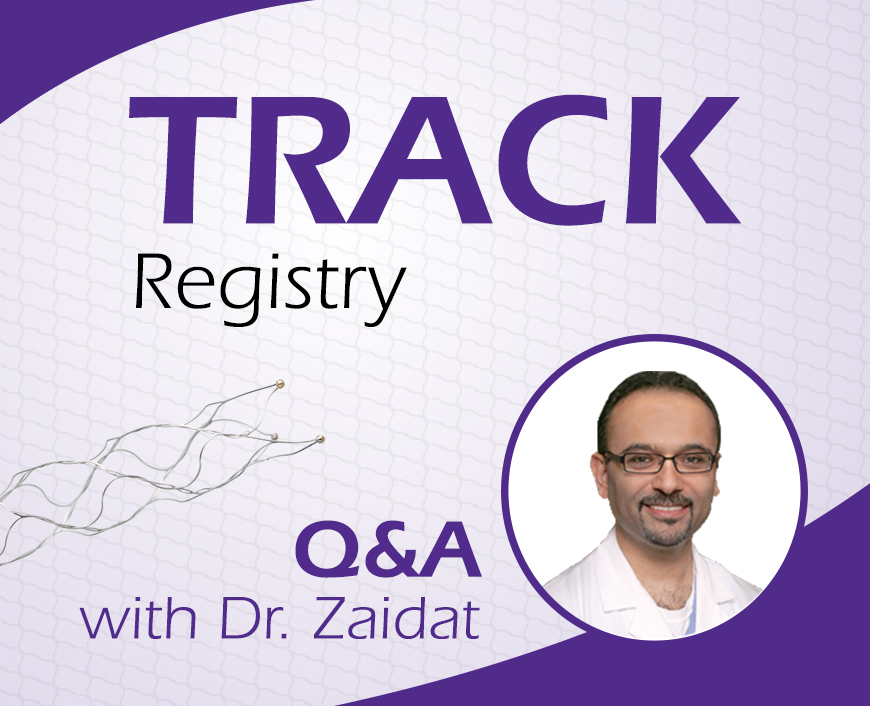- Print:

TRACK registry
October 2, 2017
Exclusive interview with Dr. Zaidat, PI of the TRACK Registry.

Stryker: Please describe what you feel is unique about the TRACK registry?
Dr. Zaidat: The TRACK registry represents real-world usage of the Trevo Retriever; we did not exclude patients based on age, stroke severity, clot location, co-morbidities or time. The only requirement was that the treating interventionalist use a Trevo Retriever as the 1st device. It is the largest published, multi-center, investigator-initiated and analyzed post-market registry for the Trevo® Retriever to date.
Stryker: What one result of the TRACK registry do you find most interesting or impactful clinically?
Dr. Zaidat: It’s hard to choose just one - there are several important results that we found interesting. First, TRACK gives us proof of concept that stent-retrievers as a class are effective. It also demonstrated that both angiographic/technical results and clinical efficacy continues to improve in real life practice. Finally, patients in TRACK experienced results as good as those from the randomized highly selected population of TREVO 2.
Stryker: If you were to study any of the results of the TRACK registry in a future clinical trial, what would it be?
Dr. Zaidat: There are several results from the TRACK registry dataset that we are looking to confirm. We would like to further study the systems of care and the effects of transfer versus direct presentation to an endovascular-capable center. Additionally, we would really like to study the effects of using a balloon guide vs. not using a balloon guide in a prospective and possibly randomized setting. In TRACK, use of the balloon guide catheter was an independent predictor of good 90-day patient outcomes. Finally, we’d like to better understand the effects of general anesthesia versus conscious sedation. In TRACK, approximately half of the patients underwent general anesthesia. There is a lot of data regarding general versus conscious sedation and studying it in a future clinical trial would be of great clinical value.